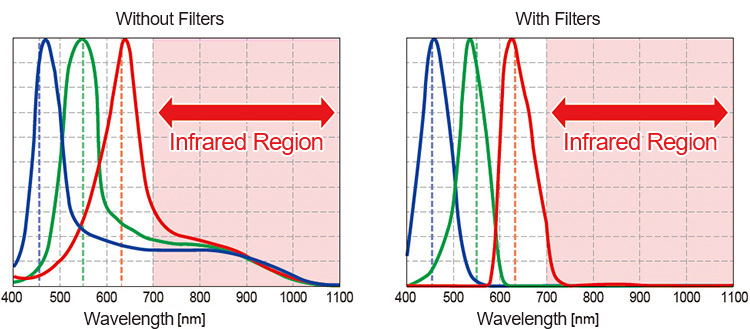<Color Sensor>
What is a color sensor?
Among sensors that detect light, those that detect the three primary
colors of red, green, and blue are called color sensors.
Color sensors detect RGB values by receiving ambient light using a
photodiode.
Color Sensor - Operating Principle
When an object is irradiated with light containing RGB components, the
color of the reflected light will change depending on the color of the
object.
For example, if the object is red, the reflected light component will
be red. For a yellow object, the reflected light will be red and
green, and if the object is white all three components will be
reflected.

[Reflected Light for Different Object Colors]
In this way, the color of the object is determined from the ratio of
color components (RGB) in the reflected light.
Similarly, the human eye determines color by receiving these reflected
light components.
It is impossible to see in the dark. This is because there is no
irradiating (illuminating) light, which means there is no reflected
light so everything looks pitch black.
Like human eyes, color sensors determine the color by first detecting
light (using photodiodes) then calculating the ratio of R, G, and B
received.
Color Sensor IC Structure
The figure below shows the structure of a color sensor IC with built-in color and IR (Infrared) cut filters.

[Schematic Structure of ROHM’s Color Sensor]
Below we compare the spectral characteristics of a color sensor with and without these filters.

[RGB Spectral Characteristics]
ROHM’s color sensor IC delivers high RGB spectral characteristics by applying RGB color filters to the internal sensor along with infrared removal characteristics (using the internal IR cut filter) to achieve high accuracy color discrimination.




